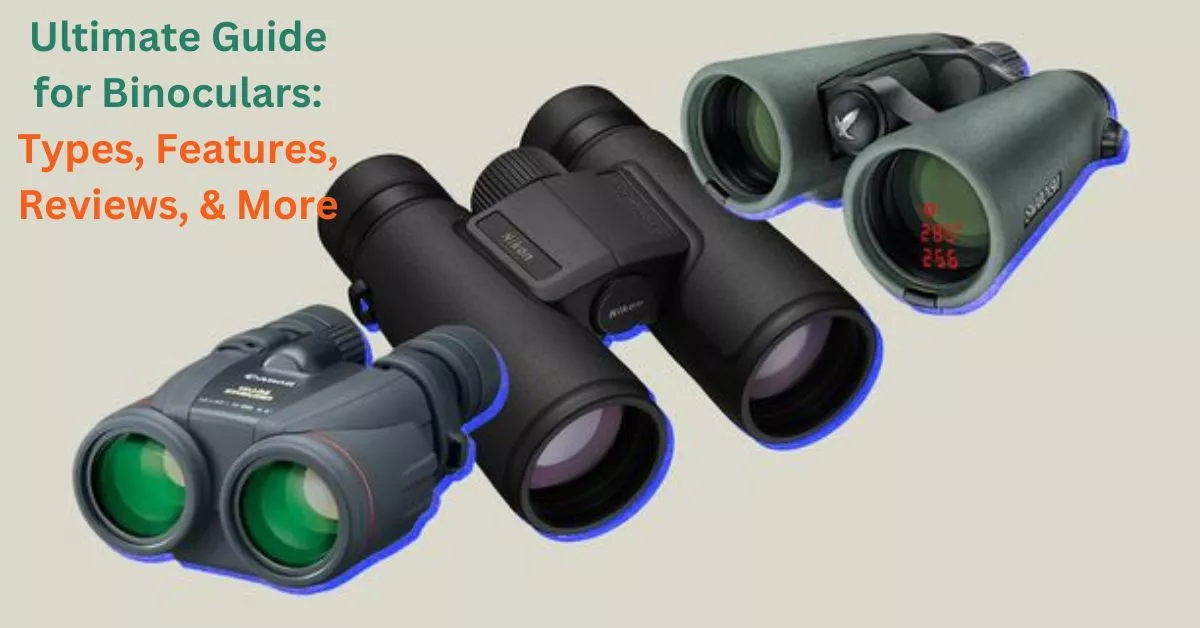Binoculars are one of the most versatile and valuable tools for anyone who loves to explore the outdoors, observe wildlife, or enjoy sports and entertainment events.
Whether you want to watch birds, stars, whales, or athletes, binoculars can bring you closer to the action and enhance your viewing experience.
But how do you choose the right pair of binoculars for your needs? What are the different types and features of binoculars? How do you use them effectively and take care of them properly?
In this ultimate guide, we will answer all these questions and more.
We will explain what binoculars are and how they work, what terms and specifications you need to know, how to select the best binoculars for your purpose,
how to use them correctly and comfortably, how to maintain and protect them, and what accessories you can get to improve your binocular performance.
By the end of this guide, you will clearly understand how to choose and use binoculars like a pro. Let’s get started!
Introduction to Binoculars
Binoculars are optical devices that use lenses and prisms to magnify distant objects and make them appear larger and more transparent.
They consist of two identical telescopes mounted side by side, one for each eye, that produce a three-dimensional image with depth perception.
The essential components of binoculars are:
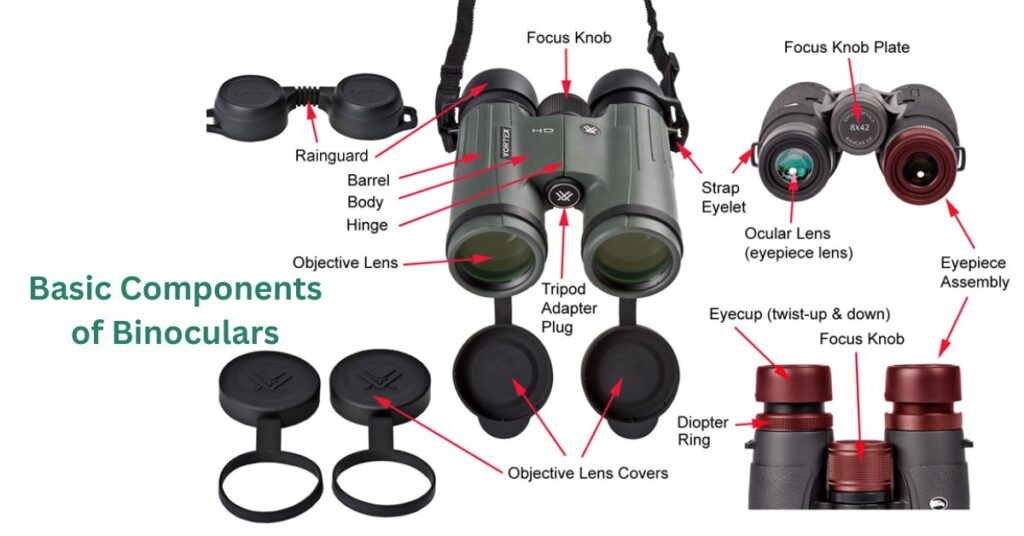
Objective lenses
These are the large lenses at the front of the binoculars that gather light from the object you are viewing.
The diameter of these lenses determines how much light the binoculars can collect and how bright the image will be.
Eyepieces
These are the small lenses at the back of the binoculars that you look through.
They magnify the image formed by the objective lenses and bring it into focus for your eyes.
Prisms
These are glass or plastic elements inside the binoculars that reflect and bend the light from the objective lenses to the eyepieces.
They also correct the image orientation to appear right-side up and not inverted.
Focus wheel
This is a knob or lever that simultaneously adjusts the focus of both eyepieces.
It allows you to fine-tune the sharpness of the image according to your eyesight and the object’s distance.
Diopter adjustment
This is a ring or knob that independently adjusts the focus of one eyepiece.
It allows you to compensate for any difference in vision between your eyes and achieve a balanced image.
Eye cups
These rubber or plastic rings surround the eyepieces and provide eye comfort.
They also block out any external light that might interfere with your viewing.
Some eye cups are foldable or retractable to accommodate eyeglass wearers.
Hinge
This joint connects the two barrels of the binoculars and allows you to adjust the distance between them.
It helps you align the binoculars with your eyes and achieve a comfortable fit.
Understanding Binocular Terminology
When you shop for binoculars, you will encounter some terms and numbers that describe their specifications and performance. Here are some of the most important ones that you need to know:
Magnification
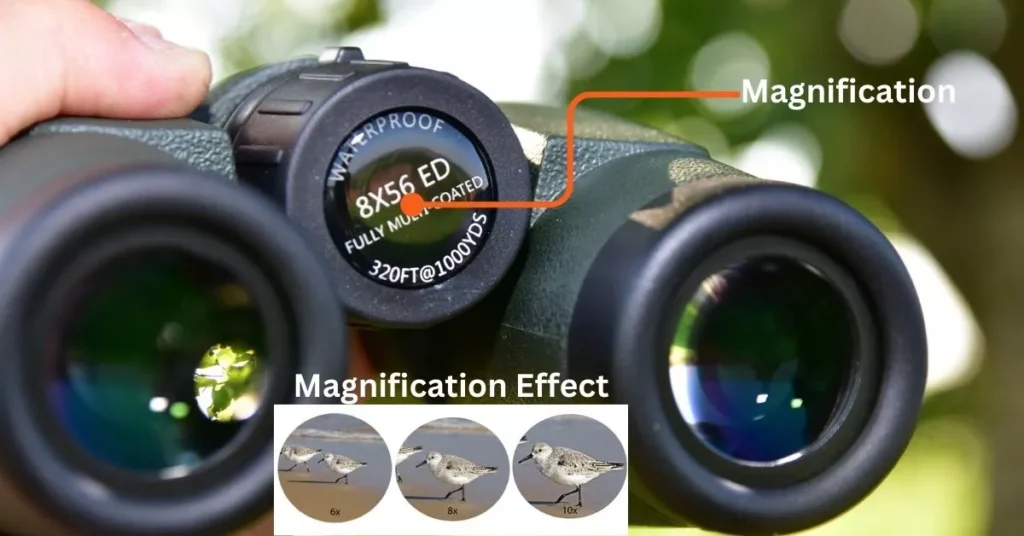
This number indicates how much larger an object appears when viewed through the binoculars compared to the naked eye.
For example, 10x magnification means an object will appear 10 times larger without binoculars.
Magnification is usually expressed as a single number (e.g., 8x) or part of a pair of numbers (e.g., 8×42).
Binocular Magnification Chart
I wrote some information on binocular magnification and how it affects the field of view, brightness, and image clarity.
I have summarized the results in a table below.
Please note that this is only a general comparison, and the actual performance and quality of the binoculars may vary depending on the brand, model, features, and accessories:
| Magnification | Objective Lens Diameter (mm) | Field of View (degrees) | Exit Pupil (mm) | Brightness | Clarity |
|---|---|---|---|---|---|
| 7×50 | 50 | 6.8 | 7.1 | High | High |
| 8×42 | 42 | 6.3 | 5.3 | Medium-High | Medium-High |
| 10×50 | 50 | 5.5 | 5.0 | Medium-High | Medium-High |
| 10×42 | 42 | 5.0 | 4.2 | Medium-Low | Medium-Low |
| 12×50 | 50 | 4.9 | 4.2 | Medium-Low | Medium-Low |
| 15×70 | 70 | 4.4 | 4.7 | Medium-Low | Low |
As you can see, the binoculars’ magnification affects the field of view, exit pupil, brightness, and image clarity.
The higher the magnification, the narrower the field of view, the smaller the exit pupil, and the lower the brightness and clarity.
The lower the magnification, the wider the field of view, the larger the exit pupil, and the higher the brightness and clarity.
The objective lens diameter also affects the brightness and clarity of the image.
The larger the objective lens diameter, the more light it can gather, and the brighter and sharper the image will be.
The smaller the objective lens diameter, the less light it can muster, and the dimmer and blurrier the image will be.
Therefore, when choosing binoculars, you must consider your needs, preferences, and your target’s lighting conditions and distance.
For example, if you want to see far and detailed objects in low-light or night-time conditions, you may choose binoculars with high magnification and large objective lens diameters, such as 15×70 or 20×80.
However, these binoculars will be heavy and bulky, and you may need a tripod or a monopod to stabilize them.
If you want to see comprehensive and bright objects in daylight or good lighting conditions, you may choose binoculars with low magnification and small objective lens diameters, such as 7×35 or 8×25.
These binoculars will be light and compact, and you can easily hold them with your hands.
Objective lens diameter
This number indicates how large the objective lenses are in millimeters.
For example, a 42mm objective lens diameter means that each objective lens has a diameter of 42mm.
Objective lens diameter is usually expressed as part of a pair of numbers (e.g., 8×42) or as a single number followed by “mm” (e.g., 42mm).
Field of view
This measures how wide an area you can see through the binoculars at a given distance.
It is usually expressed in degrees (e.g., 6°) or feet or meters at 1000 yards or meters (e.g., 420 ft/1000 yd or 140 m/1000 m).
A wider field of view means seeing more of your surroundings without moving your binoculars.
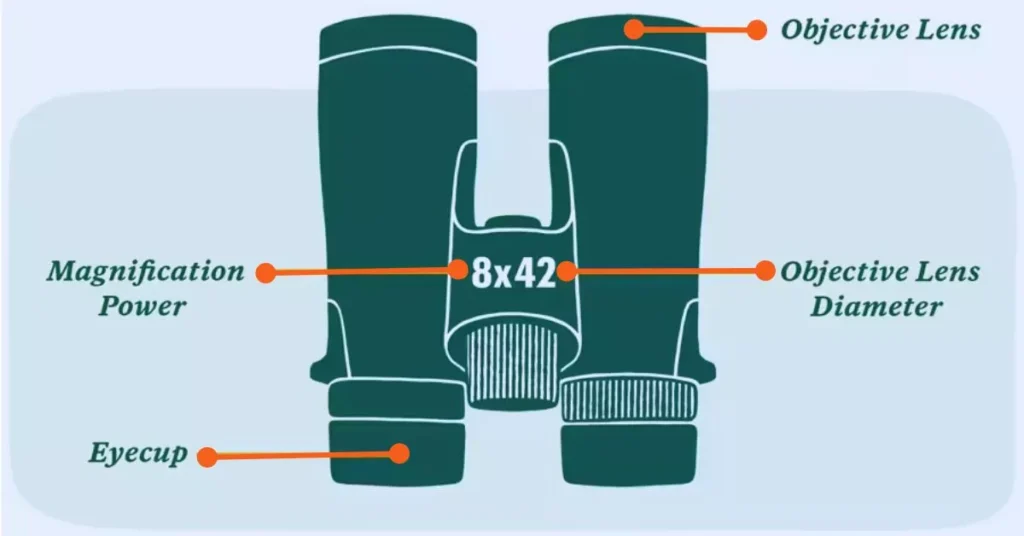
Binocular Field of View Chart
A binocular field of view chart is a way to compare the magnification and the width of the view of different binoculars.
The field of view is the area of the sky or the landscape you can see through the binoculars at a certain distance.
It is usually measured in degrees (angular field of view) or meters or feet per 1000 meters or yards (linear field of view).
The field of view depends on the magnification and the size of the objective lenses of the binoculars.
Generally, higher magnification means a narrower field of view, and larger objective lenses mean a wider field of view.
A good lot of thought for binoculars depends on your purpose and preference.
For example, if you want to observe wildlife or sports, you might prefer a wider field of view to capture more details and movements.
If you want to see distant objects or stars, you might choose a higher magnification to get a closer look.
However, there is a trade-off between magnification and field of view, so you must balance them according to your needs.
Here is an example of a binocular field of view chart that shows the angular and linear field of view for some ordinary binoculars:
| Magnification | Objective Lens Diameter (mm) | Angular Field of View (degrees) | Linear Field of View (m/1000m) |
|---|---|---|---|
| 8×42 | 42 | 8 | 140 |
| 10×42 | 42 | 5.6 | 114 |
| 12×50 | 50 | 5 | 87.5 |
| 15×70 | 70 | 4.47 | 77 |
You can use this chart to compare different binoculars and see how their field of view changes with magnifications and objective lens diameters.
You can also use the converters below to calculate the angular or linear field of view from one another:
- To convert the angular to linear field of view, multiply the angle by 17.5. For example, 8 degrees x 17.5 = 140 m/1000m.
- To convert the linear field of view to an angular field of view, divide the linear value by 17.5. For example, 140 m/1000m / 17.5 = 8 degrees.
Binocular Zoom Chart
A binocular zoom chart is a table that shows how different binocular configurations affect their zoom, which is the ability to magnify distant objects and make them appear closer.
A binocular configuration consists of two numbers, such as 8×42, which indicate the magnification power and the objective lens diameter of the binoculars.
The magnification power is how many times larger the object appears through the binoculars than with the naked eye.
The objective lens diameter is the size of the front lens in millimeters, which determines how much light the binoculars can gather and how bright and clear the image will be.
A binocular zoom chart can help you compare different binocular models and choose the best one for your needs.
For example, a higher magnification power will give you a closer view of the object but also reduce the field of view, which is how much area you can see through the binoculars.
A larger objective lens diameter will give you a brighter and clearer image, making the binoculars heavier and bulkier.
Therefore, you need to balance these factors depending on your intended use of the binoculars, such as hunting, birding, or astronomy.
Here is an example of a binocular zoom chart that shows some standard binocular configurations and their specifications:
| Magnification x Lens Diameter | Exit Pupil | Twilight Factor | Field of View at 1000 yards | Weight |
|---|---|---|---|---|
| 7×35 | 5 mm | 15.74 | 387 ft | 24 oz |
| 8×42 | 5.25 mm | 18.33 | 393 ft | 25 oz |
| 10×50 | 5 mm | 22.43 | 341 ft | 31 oz |
| 12×60 | 5 mm | 26.82 | 288 ft | 44 oz |
The exit pupil is the size of the circle of light that enters your eye when you look through the binoculars.
It is calculated by dividing the lens diameter by the magnification power.
The larger the exit pupil, the brighter the image will be in low-light conditions.
The twilight factor measures how well the binoculars can perform in dim light.
It is calculated by multiplying the magnification power by the square root of the lens diameter.
The higher the twilight factor, the better the image quality will be at dawn or dusk.
The field of view is how much area you can see through the binoculars at a certain distance. It is usually measured in feet or meters at 1000 yards or meters.
The wider the field of view, the easier it will be to locate and follow moving objects. The weight is how heavy the binoculars are in ounces or grams.
The lighter the binoculars, the more comfortable they will carry and use.
Binocular Strength Chart
A binocular strength chart is a way to compare different binoculars based on their magnification power and objective lens diameter.
It can help you choose the best binoculars for your needs and preferences.
For example, if you want to see more details of distant objects, you might prefer a higher magnification power, such as 10x or 12x.
However, higher magnification also means a narrower field of view, which is the scene area you can see through the binoculars.
A wider field of view helps find and follow moving objects like birds or animals.
A wider field of view also means less shaking and distortion of the image, especially if you hold the binoculars by hand.
Therefore, you might prefer a lower magnification power, such as 7x or 8x, for a wider field of view.
Another factor to consider is the size and weight of the binoculars. Generally, larger objective lenses mean more extensive and heavier binoculars.
More giant binoculars can be more challenging to carry and hold for long periods.
They might also require a tripod or a mount for stability.
Smaller binoculars are more compact and portable, but they might not perform well in low-light conditions or produce a dimmer image.
Therefore, you need to balance the size and weight of the binoculars with their optical performance and ease of use.
Here is an example of a binocular strength chart that shows some standard models of binoculars and their specifications:
| Model | Magnification | Objective Lens Diameter (mm) | Field of View (degrees) | Weight (g) |
|---|---|---|---|---|
| Nikon Aculon A211 8×42 | 8x | 42 | 8 | 760 |
| Bushnell H2O 10×42 | 10x | 42 | 6.5 | 709 |
| Celestron SkyMaster 15×70 | 15x | 70 | 4.4 | 1361 |
| Vortex Diamondback HD 8×28 | 8x | 28 | 6.2 | 397 |
As you can see, this chart compares different binoculars, and you see how their strength affects their field of view and weight.
You can also check our other binocular guide below to learn more about choosing binoculars for specific purposes, such as hiking, birding, or astronomy.
Exit pupil
This measures how large the circle of light that reaches your eye from each eyepiece is.
It is calculated by dividing the objective lens diameter by the magnification (e.g., 42mm / 8x = 5.25mm).
The exit pupil should match or exceed the size of your eye pupil in low-light conditions (about 2-7mm) to ensure optimal brightness and clarity.
Eye relief
This measures how far your eyes can be from the eyepieces and still see the full image.
It is usually expressed in millimeters (e.g., 15mm).
A more extended eye relief means using the binoculars comfortably with eyeglasses or sunglasses on.
Close focus
This measures how close you can be to an object and still focus on it with the binoculars.
It is usually expressed in feet or meters (e.g., 6.5 ft or 2 m).
A shorter close focus means using binoculars to observe small or nearby objects like insects or flowers.
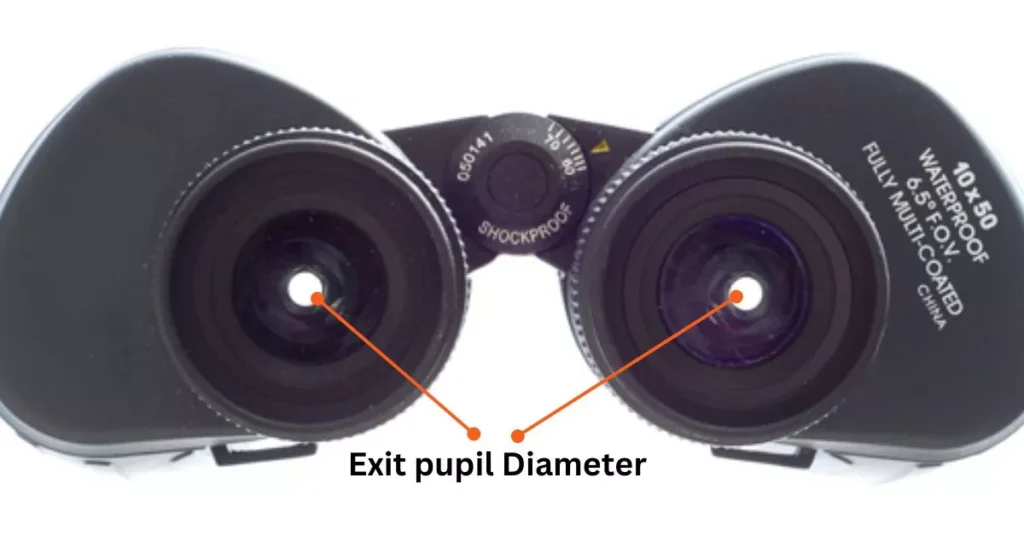
Types of Binoculars
Binoculars come in different shapes and sizes depending on their design and purpose. The main types of binoculars are:
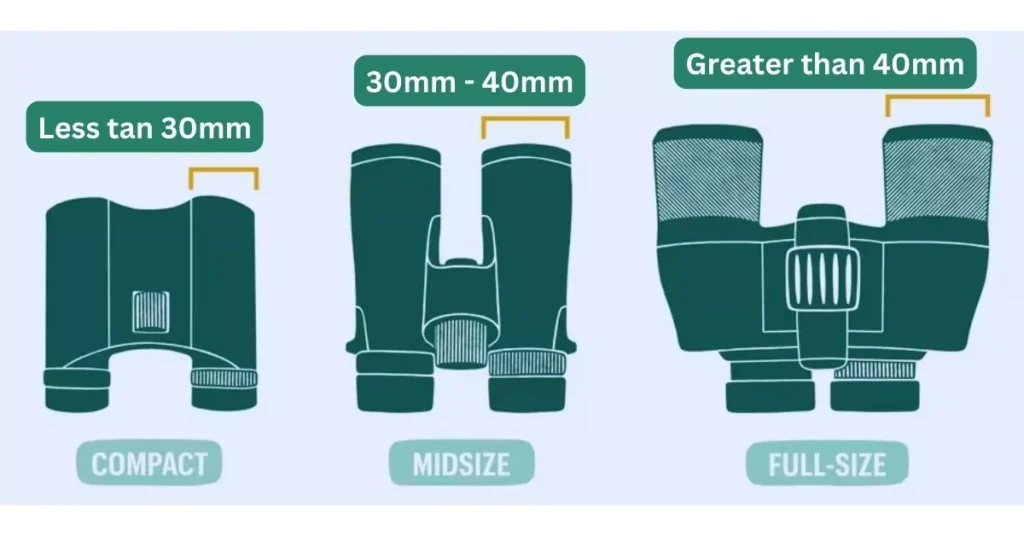
Compact Binoculars
These are small and lightweight binoculars that are easy to carry and store.
They usually have a magnification of 8x or 10x and an objective lens diameter of 25mm or less.
They are ideal for travel, hiking, and casual use.
However, they may have a narrow field of view, less light-gathering ability, and lower image quality than more giant binoculars.
Full-size Binoculars
These large and heavy binoculars offer high magnification and bright images.
They usually have a magnification of 10x or more and an objective lens diameter of 42mm or more.
They are ideal for wildlife observation, astronomy, and low-light conditions.
However, they may be bulky, expensive, and hard to steady without a tripod.
Zoom Binoculars
These binoculars have a variable magnification range, such as 8-16x or 10-30x.
They allow you to adjust the magnification according to your preference and the distance of your target.
They are ideal for versatile use and changing situations. However, they may have a reduced field of view, lower image quality, and higher distortion than fixed-magnification binoculars.
Birding Binoculars
These are binoculars that are specially designed for birdwatching and wildlife observation.
They usually have a magnification of 8x or 10x and an objective lens diameter of 32 or 42mm.
They have a wide field of view, fast focus, high image quality, and durable construction.
They are ideal for spotting and identifying birds and animals in various habitats and lighting conditions.
Astronomy Binoculars
These are binoculars that are specially designed for stargazing and celestial observation.
They usually have a high magnification of 15x or more and a large objective lens diameter of 50mm or more.
They have high light-gathering ability, high resolution, and high contrast.
They are ideal for viewing the moon, planets, stars, nebulae, and galaxies.
Marine Binoculars
These are binoculars that are specially designed for boating and water activities.
They usually have a low magnification of 7x or 8x and a large objective lens diameter of 50mm or more.
They have a wide field of view, waterproof and fog-proof capabilities, image stabilization technology, and compass features.
They are ideal for navigating on the water spotting buoys, landmarks, ships, and marine life.
Choosing the Right Binoculars: Understanding Size Charts and Specifications
A binocular size chart is a way to compare different binoculars based on their physical dimensions and weight.
Binoculars are usually classified into three categories according to their objective lens diameter, which is the size of the front lenses in millimeters.
The objective lens diameter affects how much light the binoculars can gather and how bright and clear the image will be. The categories are:
- Compact binoculars: Objective lens size is less than 30mm (8×25, 10×28, etc.)
- Midsize binoculars: Objective lens size is from 30mm to 40mm (10×30, 8×32, etc.)
- Full-size binoculars: Objective lens size is greater than 40mm (8×42, 10×50, etc.)
1. Compact Binoculars
The size and weight of the binoculars also depend on the magnification power, which is the first number in the model name.
For example, 8×42 binoculars have a magnification power of 8 and an objective lens diameter of 42mm.
A binocular size chart can help you choose the best binoculars for your needs and preferences.
For example, if you want to use binoculars for backpacking and hiking, travel, or concerts they are easy to carry and store. Good for quick looks at birds or other wildlife when you don’t need super detailed views.
- Pros:
- Very small and lightweight, easy to carry and store.
- Often more affordable than other types.
- Cons:
- Generally gather less light, leading to dimmer views, especially in low-light conditions.
- Image quality might not be as sharp as larger binoculars.
2. Midsize Binoculars
A versatile choice for most outdoor activities like bird watching, sporting events, or nature hikes. Offer a good balance between size, weight, image quality, and light-gathering ability.
However, it would be best if you also considered other factors such as the field of view, the exit pupil, the eye relief, and the features of the binoculars.
- Pros:
- More comfortable to hold than compacts due to its larger size.
- Provide a wider field of view for easier target acquisition.
- Offer decent image quality and light-gathering for good viewing in most lighting conditions.
- Cons:
- Heavier than compacts
3. Full-size Binoculars
These binoculars offer the most powerful light gathering and generally provide the brightest, clearest images.
Best for situations where you prioritize the brightest possible image, such as astronomy, birding at dawn/dusk, or long-distance wildlife observation. Examples: 8×42, 10×50 binoculars.
- Pros:
- Gather the most light, providing the brightest and clearest views, especially in low-light conditions.
- Often have superior image quality and wider fields of view compared to smaller binoculars.
- Cons:
- Most expensive option due to its advanced optics.
Additional Considerations:
Eye relief
This is the distance your eye can be from the eyepiece while still seeing a full field of view. Important for eyeglass wearers.
Focus system
Center focus uses a single knob to adjust both eyepieces simultaneously, while roof prism binoculars may have independent focus for each eye.
Durability
Look for binoculars that are waterproof, fogproof, and have a rugged build quality for outdoor use.
Here is an example of a binocular size chart that shows some standard models of binoculars and their specifications:
| Model | Magnification | Objective Lens Diameter (mm) | Field of View (degrees) | Weight (g) |
|---|---|---|---|---|
| Nikon Aculon A211 | 8x | 42 | 8 | 760 |
| Bushnell H2O | 10x | 42 | 6.5 | 709 |
| Celestron SkyMaster | 15x | 70 | 4.4 | 1361 |
| Vortex Diamondback HD | 8x | 28 | 6.2 | 397 |
I hope this helps you understand a binocular size chart and how to use it.
Features to Consider When Buying Binoculars
Binoculars have various features that affect their performance and quality. Some of the most essential features to consider when buying binoculars are:
Magnification and objective lens diameter
These are the two numbers that describe the basic specifications of binoculars, such as 8×42 or 10×50.
The first number is the magnification, which indicates how much larger the object appears through the binoculars than with the naked eye.
The second number is the objective lens diameter, which indicates the size of the front lenses in millimeters.
The objective lens diameter affects the amount of light that enters the binoculars and the image’s brightness.
Field of view and exit pupil
These numbers describe the visual characteristics of binoculars, such as 330 ft/1000 yds or 5.25 mm.
The field of view is the width of the area you can see through the binoculars at a certain distance.
It is usually expressed in feet or meters per 1000 yards or meters.
The field of view affects how much of the scene you can capture and how easy it is to follow moving objects.
The exit pupil is the diameter of the circle of light that you see when you hold the binoculars away from your eyes.
It is calculated by dividing the objective lens diameter by the magnification.
The exit pupil affects how well you can see in low-light conditions and how comfortable your eyes are.
Prism type (roof prism vs. porro prism)
These are two prisms used to invert and correct the image in binoculars.
Prisms are optical elements that reflect and refract light.
Roof prisms have a straight and slim shape, while porro prisms have a zigzag and bulky shape.
Roof prisms are more compact, lightweight, and durable but require more complex coatings and alignment to achieve high image quality.
Porro prisms are more straightforward, cheap, and easy to produce but result in more extensive and heavier binoculars.
Coatings and lens quality
These factors affect the transmission, reflection, and absorption of light in binoculars.
Coatings are thin layers of material that are applied to the lenses and prisms to reduce glare, enhance contrast, and improve color fidelity.
Lens quality refers to the shape, material, and precision of the lenses that affect the image’s clarity, sharpness, and distortion.
Waterproof and fog-proof capabilities
These features protect binoculars from moisture, dust, and temperature changes.
Waterproof binoculars have sealed o-rings that prevent water from entering the body.
Fog-proof binoculars have nitrogen or argon gas in the body, preventing condensation from forming on the internal optics.
Ergonomics and weight
These factors affect how comfortable and easy it is to use binoculars.
Ergonomics refers to binoculars’ design, shape, size, and grip that affect how well they fit your hands and face.
Weight refers to how heavy or light binoculars are, which affects how long you can hold them without fatigue or strain.
How to Choose Binoculars for Specific Activities
Binoculars are versatile devices that can be used for various activities and purposes. However, not all binoculars are suitable for every situation.
Depending on your intended use, you may need to consider different factors and features when choosing binoculars.
Here are some general guidelines and recommendations for how to choose binoculars for specific activities:
Birdwatching and wildlife observation
If you want to observe birds and animals in their natural habitats, you will need binoculars to provide a clear and detailed view of your target.
You will also need binoculars that adapt to different lighting conditions, distances, and movements.
Some of the features that you should look for in birding binoculars are:
- A magnification of 8x or 10x can offer a good balance between image size and stability.
- An objective lens diameter of 32mm or 42mm can balance brightness and portability well.
- A wide field of view can help you quickly locate and follow your target.
- A fast and smooth focus can help you adjust the image quickly and accurately.
- High-quality images can help you see your target’s colors, patterns, and details.
- A durable and waterproof construction that can withstand harsh weather and environments.
- Some examples of good birding binoculars are [Nikon Monarch 5 8×42], [Celestron Nature DX 8×42], [Vortex Diamondback HD 10×42].
Astronomy and stargazing
If you want to explore the night sky and discover celestial objects, you will need binoculars to capture as much light as possible and magnify the image sufficiently.
You will also need binoculars to provide a high resolution and contrast to distinguish the stars and planets.
Some of the features that you should look for in astronomy binoculars are:
- A high magnification of 15x or more can offer a closer view of the sky.
- A significant objective lens diameter of 50mm or more can offer a brighter image in low-light conditions.
- A high exit pupil of 4mm or more can match the size of your dilated pupil at night.
- A high-quality prism and coating can improve light transmission and image quality.
- A tripod or mount compatibility can help you stabilize the image and reduce handshake.
- Some examples of good astronomy binoculars are [Celestron SkyMaster 15×70], [Orion GiantView 25×100], and [Canon 18×50 Image Stabilization All-Weather].
Hunting and outdoor activities
If you are interested in hunting or other outdoor activities, you will need binoculars to help you spot your prey or target accurately and quickly.
You will also need binoculars that can withstand rugged conditions and perform well in various terrains and climates.
Some of the features that you should look for in hunting binoculars are:
- A moderate magnification of 8x or 10x can offer a clear and stable view without sacrificing the field of view.
- An objective lens diameter of 42mm or more can offer a bright image in low-light conditions such as dawn or dusk.
- A high-quality coating and lens can enhance the image’s contrast and color fidelity.
- A waterproof and fog-proof capability, which can protect the binoculars from moisture and temperature changes.
- A rubber-armored or camouflaged body can provide a good grip and concealment.
- Some examples of good hunting binoculars are [Bushnell Legend Ultra HD 10×42], [Vortex Viper HD 10×42], and [Leupold BX-4 Pro Guide HD 10×42].
Sports events and concerts
If you are interested in watching sports events or concerts from a distance, you will need binoculars to bring you closer to the action and enhance your enjoyment.
You will also need binoculars that are easy to use and carry around.
Some of the features that you should look for in sports or concert binoculars are:
- A low magnification of 7x or 8x can offer a comprehensive view and avoid image shaking.
- A compact or zoom design, which can offer portability and versatility.
- A center focus or fixed focus system can offer convenience and speed.
- Good eye relief and eyecups can offer comfort and compatibility with glasses or sunglasses.
- Some examples of good sports or concert binoculars are: [Nikon Aculon A30 10×25], [Bushnell Spectator Sport 8×25], [Olympus 8-16×40 Zoom DPS I].
Travel and sightseeing
If you are interested in traveling and sightseeing, you will need binoculars to help you appreciate the beauty and details of the places you visit.
You will also need binoculars that are lightweight and easy to pack.
Some of the features that you should look for in travel binoculars are:
- A low to moderate magnification of 8x or 10x can balance image size and field of view.
- A small objective lens diameter of 25mm or 30mm can offer a compact and lightweight design.
- A roof prism or foldable design can offer a slim and sleek shape.
- A durable and waterproof construction, which can withstand bumps and splashes.
- Some examples of good travel binoculars are [Zeiss Terra ED Pocket 8×25], [Leica Ultravid BCR 10×25], and [Nikon Prostaff 7S 10×30].
Binocular Accessories
Binoculars are helpful devices that enhance your vision and enjoyment of various activities.
However, you may need accessories that can improve their performance, protection, and comfort to get the most out of your binoculars.
Some of the most common and valuable binocular accessories are:
Binocular straps and harnesses
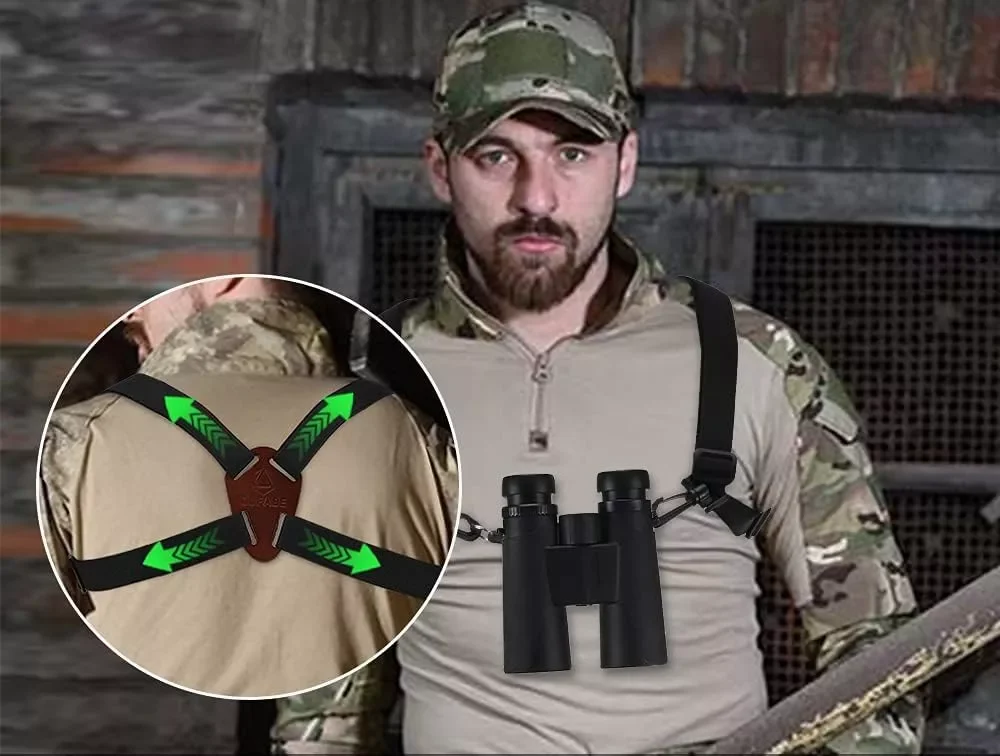
These devices help you carry and hold your binoculars securely and comfortably.
Binocular straps are usually made of nylon or leather and attach to the binoculars with clips or loops.
They allow you to hang your binoculars around your neck or shoulder for easy access.
Binocular harnesses are usually made of elastic or webbing and attach to the binoculars with hooks or buckles.
They distribute the weight of the binoculars across your chest and back, reducing strain and fatigue.
They also keep your binoculars close to your body, preventing them from swinging or bouncing.
- Read also:
Tripods and mounts
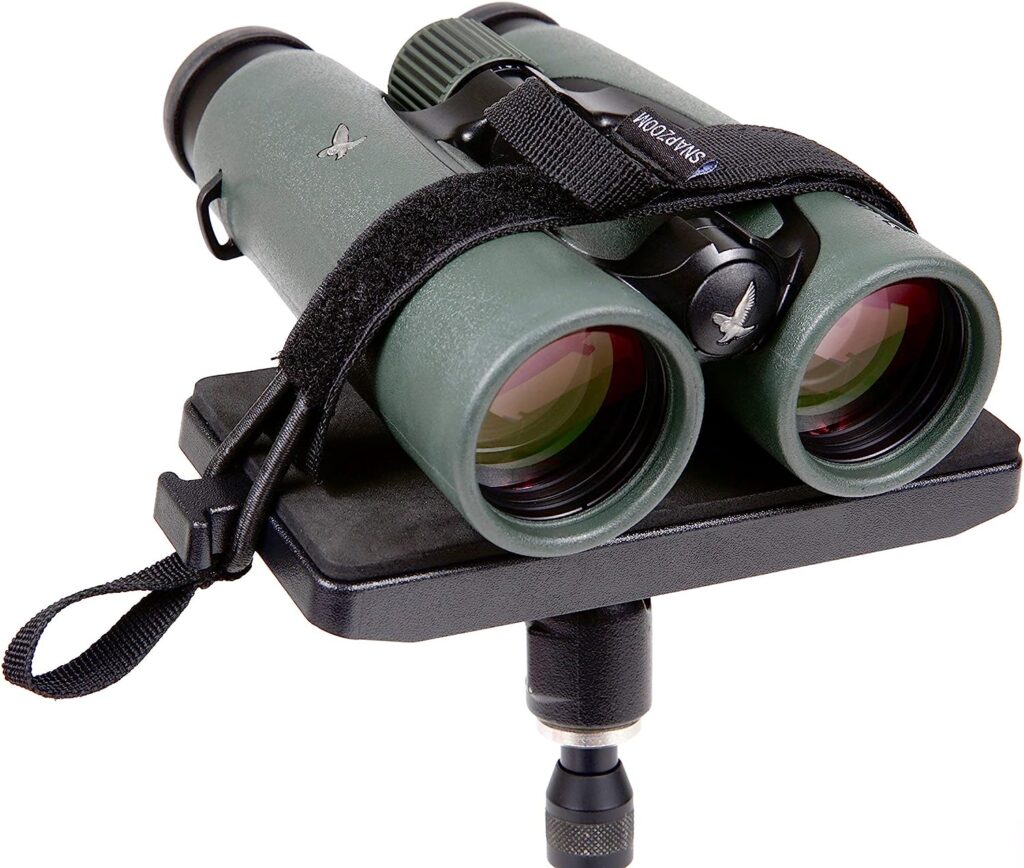
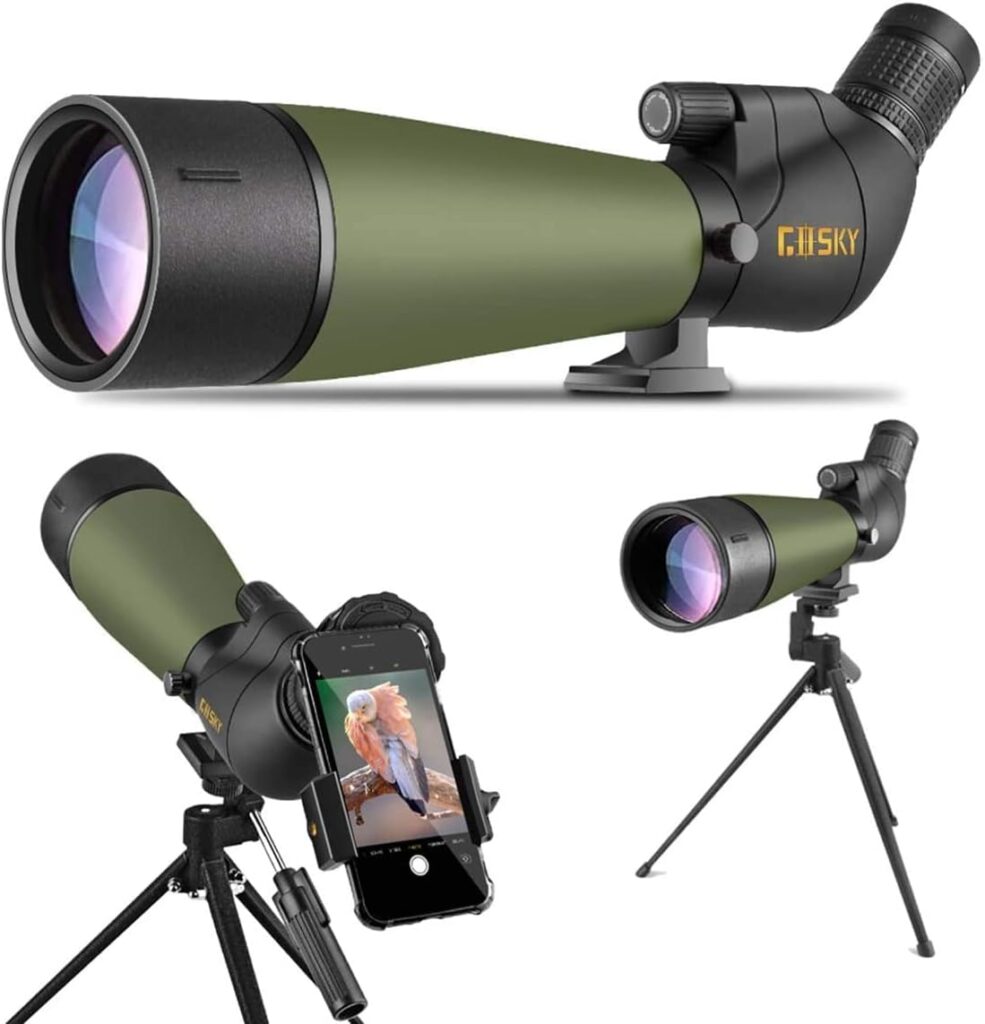
These devices help you stabilize and support your binoculars on a flat surface.
Tripods are usually made of metal or plastic and have three legs that can be adjusted in height and angle.
They have a head that can rotate and tilt to align your binoculars with your target.
Mounts are usually made of metal or plastic and have a screw or clamp that can attach to your binoculars or tripod.
They allow you to fix your binoculars in place and adjust their position with knobs or levers.
Lens cleaning and maintenance
These products help you clean and care for your binocular lenses and prisms.
Lens cleaning products include microfiber cloths, lens brushes, lens pens, lens wipes, lens cleaners, and air blowers.
They help you remove dust, dirt, fingerprints, smudges, and stains from your lenses without scratching or damaging them.
Lens maintenance products include caps, covers, cases, pouches, and bags.
They help protect your lenses from scratches, impacts, moisture, dust, and sunlight when not in use.
Carrying cases and covers
These are products that help you store and transport your binoculars safely and conveniently.
Carrying cases are usually made of hard or soft materials and have a zipper or buckle closure.
They have a padded interior that can cushion your binoculars from shocks and vibrations. They also have a handle or strap to help you carry them easily.
Covers are usually made of fabric or rubber and have a slip-on or snap-on design.
They cover the body of your binoculars, leaving the lenses exposed.
They help you protect your binoculars from scratches, dust, water, and weather.
Binocular Care and Maintenance
Binoculars are valuable devices that can last long if you take good care of them.
Proper care and maintenance can help you preserve the quality and performance of your binoculars and prevent potential problems and damages.
Here are some tips and steps on how to care for and maintain your binoculars:
Cleaning lenses and prisms
The lenses and prisms are your binoculars’ most essential and delicate parts. They are responsible for creating the image that you see through the eyepieces.
To keep them clean and clear, you should follow these steps:
Step 1:
Use a lens brush or an air blower to gently remove dust or loose particles from the lenses and prisms.
Please do not use your fingers, cloth, or tissue to wipe them, as they may scratch or smudge the surface.
Step 2:
Use a lens pen or a microfiber cloth to gently wipe any fingerprints, stains, or smudges from the lenses and prisms.
Do not use alcohol, solvent, or abrasive material to clean them, as they may damage the coating or the glass.
Step 3:
Use a lens cleaner or distilled water to moisten a lens pen or a microfiber cloth, and gently wipe any stubborn dirt or grease from the lenses and prisms.
Do not spray or pour any liquid directly onto the lenses or prisms, as they may leak into the body and cause fogging or corrosion.
Step 4:
Use a dry lens pen or a microfiber cloth to dry and polish the lenses and prisms gently.
Do not leave moisture or residue on the surface; they may affect the image quality or cause mold growth.
Storing binoculars properly
The way you store your binoculars can affect their condition and longevity.
To keep them safe and protected, you should follow these tips:
Tip 1:
Use lens caps, lens covers, lens cases, lens pouches, or lens bags to cover and shield your binoculars from dust, sunlight, moisture, and impact when not in use.
Please do not leave your binoculars exposed to the elements, as they may degrade the coating or the glass.
Tip 2:
Use a carrying case or a cover to store your binoculars in a cool, dry, and dark place when not in use.
Do not store your binoculars in a hot, humid, or bright place, as they may cause fogging, corrosion, or fading.
Tip 3:
Use silica gel packets or dehumidifiers to absorb moisture from your binoculars when storing them in a humid place.
Do not store your binoculars in a damp place, as they may cause mold growth or rusting.
Avoiding common mistakes that can damage binoculars
The way you use your binoculars can also affect their performance and durability.
To avoid any common mistakes that can damage your binoculars, you should follow these tips:
Tip 1:
Do not drop, hit, or shake your binoculars, as they may cause misalignment, breakage, or malfunction.
Tip 2:
Do not expose your binoculars to extreme temperatures, such as cold or scorching heat, as they may cause expansion, contraction, cracking, or warping.
Tip 3:
Do not submerge your binoculars in water, even if they are waterproof or fog-proof, as they may cause leakage, short circuit, or malfunction.
Tip 4:
Do not disassemble or modify your binoculars without professional guidance, as they may void the warranty, damage the parts, or affect the calibration.
Binocular Technology and Innovations
Binoculars are devices that have evolved and improved over the years, thanks to the advancement of technology and innovation.
Modern binoculars have incorporated various features and functions that enhance their performance, functionality, and convenience.
Some of the most notable binocular technology and innovations are:
Image stabilization technology
This feature helps reduce or eliminate the image shake caused by hand movement, wind, or vibration. Image stabilization technology can be either optical or electronic.
Optical image stabilization uses a gyroscope or a prism to adjust the position of the lenses or prisms to compensate for the motion.
Electronic image stabilization uses a sensor or a processor to detect the movement and crop or shift the image accordingly.
Digital binoculars and camera integration
These binoculars have a built-in digital camera or a connection to a smartphone or tablet.
Digital binoculars and camera integration allow you to capture photos or videos of what you see through the binoculars and store them in a memory card or a cloud service.
They also allow you to share, edit, or enhance images or videos with various apps or software.
Night vision binoculars
These binoculars allow you to see in dark or low-light conditions.
Night vision binoculars use either infrared or thermal technology to create an image.
Infrared night vision binoculars use an infrared illuminator to emit invisible light that reflects off the objects and is detected by an image intensifier tube.
Thermal night vision binoculars use a thermal sensor to detect the heat emitted by the objects and create an image based on the temperature differences.
Smart binoculars with built-in tech features
These binoculars have integrated various tech features that enhance their functionality and convenience.
Smart binoculars with built-in tech features may include:
- A GPS that can locate your position and track your movements
- A compass system that can indicate your direction and orientation
- A rangefinder system that can measure the distance and angle of your target
- A laser pointer system that can mark your target with a visible beam
- A Bluetooth system that can connect your binoculars to other devices wirelessly
- A voice control system that can operate your binoculars with voice commands
Binoculars for Kids and Education
Binoculars are not only devices for adults but also for kids and education.
Binoculars can help kids develop their curiosity, observation skills, and interest in nature and science.
Binoculars can also be used for educational purposes like field trips, projects, experiments, and more.
However, not all binoculars are suitable or safe for kids and education.
To choose the best binoculars for kids and education, you should consider some factors, such as:
- The age and maturity of the kids
- The purpose and frequency of use
- The size and weight of the binoculars
- The magnification and objective lens diameter of the binoculars
- The durability and safety of the binoculars
- The price and quality of the binoculars
Some general guidelines and recommendations for choosing binoculars for kids and education are:
Younger Kids
For younger kids (under 10 years old), choose binoculars that are small, lightweight, easy to use, low magnification (4x or 6x), large objective lens diameter (30mm or more), durable, shockproof, waterproof, colorful, fun, cheap.
For older kids (over 10 years old), choose binoculars that are medium-sized, moderate weight, adjustable, moderate magnification (8x or 10x), medium objective lens diameter (25mm or 30mm), durable, waterproof, fog-proof, stylish, functional, affordable.
Educational Purposes
For educational purposes (for any age group), choose binoculars suitable for the activity or subject matter, high-quality optics, high-performance features (such as image stabilization or digital camera), ergonomic design, and easy to carry and storage.
Some examples of good binoculars for kids and education are:
[Educational Insights GeoSafari Jr. Kidnoculars]: These are compact and colorful binoculars designed for preschoolers (3 to 6 years old). They have a fixed focus system that does not require any adjustment. They have a magnification of 2x and an objective lens diameter of 24mm. They have a rubberized body that is durable and comfortable. They also have a neck strap and a carrying case that are easy to use and store.
Best Binoculars For Kids
[Celestron Outland X 8×25]: These compact and versatile binoculars suit adults and older kids (10 years and up).
They have a center focus system that allows you to adjust the image easily. They have a magnification of 8x and an objective lens diameter of 25mm.
They have a rubber-armored body that is durable and waterproof.
They also have twist-up eyecups, a neck strap, and a carrying case that are convenient and comfortable.
[Canon 10×30 Image Stabilization II]: These are full-size and high-tech binoculars ideal for educational purposes (for any age group).
They have an image stabilization system that reduces the image shake caused by hand movement or vibration.
They have a magnification of 10x and an objective lens diameter of 30mm. They have a metal-alloy body that is durable and water-resistant.
They also have a long eye relief, a neck strap, and a carrying case that is comfortable and protective.
Conclusion
This concludes our blog article on the ultimate guide to binoculars. We hope you enjoyed reading it and learned something new. If you have any questions, comments, or feedback, please get in touch with us. Thank you for your attention and interest! 😊
How do I use and adjust my binoculars properly?
To use and adjust your binoculars properly, you should follow these steps:
Step 1:
Hold your binoculars with both hands and place them against your eyes. Ensure your eyes are aligned with the eyepieces and your eyelashes do not touch the lenses.
Step 2:
Adjust the distance between the eyepieces until you see a single circular image. You can do this by moving your binoculars’ hinge or center wheel.
Step 3:
Adjust the focus of your binoculars until you see a sharp and clear image. You can turn the center wheel or the diopter ring of your binoculars.
Step 4:
Adjust the eyecups of your binoculars according to your preference and whether you wear glasses. You can do this by twisting, folding, or sliding the eyecups of your binoculars.
What are the benefits of using binoculars?
Binoculars can help you see distant objects more clearly and magnified. They can also enhance your enjoyment and appreciation of various activities, such as birdwatching, astronomy, hunting, sports, travel, and more.
How do I choose the suitable binoculars for my needs?
To choose the suitable binoculars for your needs, you should consider some factors, such as the magnification, the objective lens diameter, the field of view, the exit pupil, the prism type, the coatings, the waterproof and fog-proof capabilities, the ergonomics, and the weight. You should also consider the specific activity or purpose for which you intend to use your binoculars.

